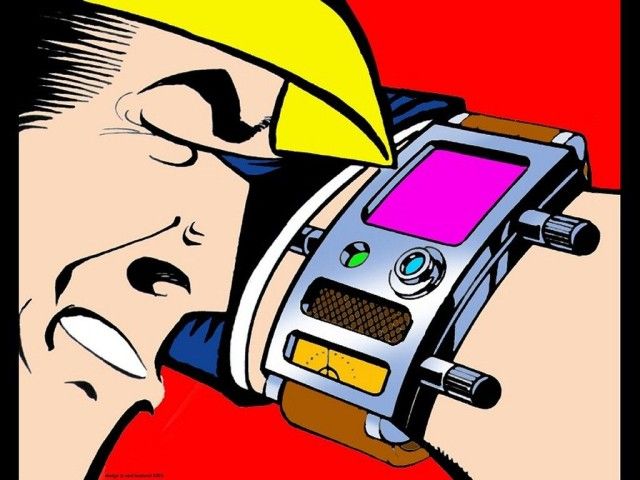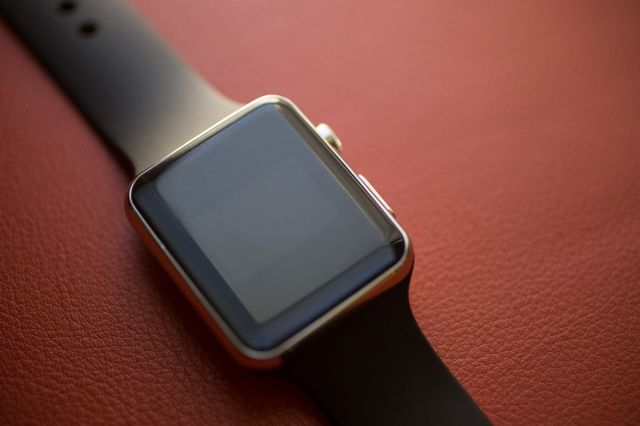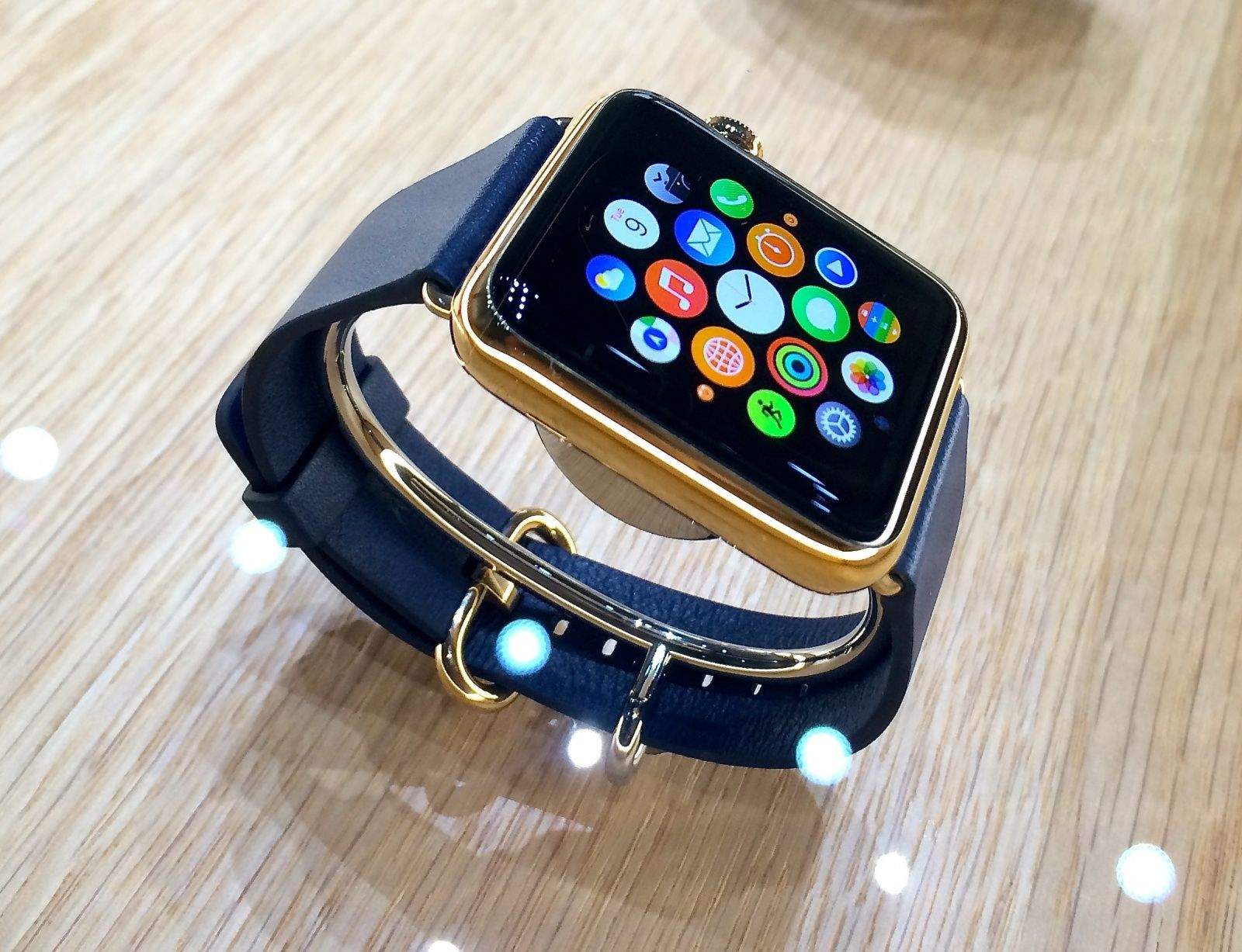Ever since Tim Cook unveiled the Apple Watch last September, it’s been one disappointment after another as far as I’m concerned. Apple’s first wearable won’t come in the minimalist form factor of the fitness bracelets I love. Worse yet, the launch version of the fashion-forward device will lack GPS, suffer from underwhelming battery life and fail to offer truly native third-party apps.
For the first time, I realized I would not be buying an Apple product when it first hit the market. “It’s not worth lining up for,” I told my dad when he asked what I thought after the Apple Watch’s big reveal.
But a funny thing happened on the way to Apple Watch’s launch day, which is coming sometime this spring. And I’m not talking about the previously unthinkable — an Apple fan calling the Microsoft Band the best smartwatch on the planet. No, I’m talking about wading through an ungodly sea of really bad smartwatches at International CES earlier this month and seeing indisputable proof of just how innovative and disruptive Apple Watch actually will be.
The Apple Watch is the most divisive product Apple’s launched since the iPhone, with plenty of detractors saying it’s not even going to be an iPod-size hit. “It’s a niche techie device that normal people aren’t going to want to wear,” is the general complaint I’ve heard.
But after roaming the fitness and wearables section at CES, I’m certain Apple Watch is going to destroy half the companies battling in this space within the next two to three years. It’s not even going to be a close fight.
Apple Watch isn’t just a fitness band. It’s not just a fashion accessory either. But those are really the only two things the competition is making: accelerometers wrapped in a fitness bracelet, or fashionable watches that kind of talk to your phone. Apple Watch is both of these and much, much more.
“I saw nothing that stood out,” Apple analyst Ben Bajarin told Cult of Mac after checking out the wearables at CES. “Apple will likely define the category and their developers will hopefully help flesh out the use cases for not only the Apple Watch but the smartwatch category.”
At CES, it became immediately clear that the rest of the industry still has no idea what regular people might want to use wearables for, other than tracking movement and footsteps. And even though Apple shined a bright light on the future of wearables in September, most of the industry hasn’t caught on to what makes Apple Watch special. There are four big points all the other major players seem to be missing.

Apple Watch is a great two-way communication device
Plenty of smartwatches let you answer phone calls from your wristwatch, but none offer the power of Apple Watch’s Digital Touch communication features. My initial reaction to Digital Touch — which lets a simple tap on your Apple Watch be felt on another Apple Watch wearer’s wrist, among other things — was that it’s a silly gimmick. But the more I’ve thought about how frequently I ignore text messages and important reminders, the more obvious it becomes that Digital Touch will likely become the foremost way my family gets my attention. And with voice-to-text right on my wrist, I’ll be quicker to respond to text messages or send off a quick audio message.
All the other smartwatches at CES do nothing more than relay communication from your smartphone to your wrist (texts, emails, phone calls, etc), without offering a compelling way to create and send messages. And let’s be honest: Only someone the size of Thumbelina will be able to easily type out a message on the tiny Galaxy S keyboard.
Weathering a welter of new alerts on your wrist telling you to grab your smartphone seems like the exact opposite of what people want. Who needs more maddening notifications without a meaningful way to act upon them? Apple Watch solves this by making interactions only seconds long — and not just for things you can do on your iPhone.
Apple Watch puts your wallet on your wrist
Of the 3,200 booths at CES, no one was selling a wearable that lets you wave your wrist to pay with Bitcoin or your debit card. Not even Samsung or Sony have copied the powerful combination of Apple Pay on Apple Watch yet. The two hottest payments startups at CES were LoopPay, which Samsung is supposedly eyeing, and Plastc. Both are decent payment solutions, but they’re really just stopgaps.
Most analysts underestimate how important a role Apple Watch will play in the future of Apple Pay. Pulling your iPhone out of your pocket to pay is nearly the same as reaching for your wallet. Having Apple Pay right on your wrist — just double-click and you’re done — is going to be even easier. When Apple’s payment system comes to everyone’s wrists, it’s really going to take off.

Apple Watch is truly ‘smart’ — and truly fashionable
In the race to catch up with Apple Watch, fashion watchmakers are adding crappy features to their watch faces while unfashionable fitness brands are trying to be hip by bedezzaling their accelerometers in Swarovski crystals. On almost every Apple Watch competitor I saw at CES, these misguided “upgrades” look bad and function even worse.
Nobody’s firing on all cylinders. Microsoft Band is killing it in the features department, but doesn’t have a fashionable bone in its body. Samsung and Sony’s smartwatch offerings look too nerdy for a normal person to wear. Withings’ new Activité Pop was the only smartwatch we’d actually want to wear — it’s minimalist, like a Swatch, gets eight months of battery life and looks great — but it’s not really that smart.
Meanwhile, I wore a fake Apple Watch around for two days, and I felt fashionable as hell. Unlike the bulky Moto 360 and Samsung smartwatches, the Apple Watch felt understated and a lot less bulky than I anticipated. It doesn’t look like you have a TV screen taped to wrist, like some other smartwatches. Jony Ive killed it on the Apple Watch design by balancing high tech with high fashion.
A lot of tech nerds still don’t understand how Apple will get away with charging a premium for the gold Apple Watch Edition, but I think it’s going to be huge among fashionistas. People don’t shell out $90,000 for a Hermes Birkin bag because ostrich hide is so much better at holding stuff than whatever material Jansport backpacks are made of. They’re buying a fashion statement. Apple Watch is the only wearable that can score you points with both the fashion crowd and the nerds.
Apple Watch is a wrist-size hub for all your devices
By 2018, Apple Watch isn’t going to be the only wearable you own. There will be smart socks to go with your smart yoga mat. Basketballs and soccer balls will come with built-in sensors. Your kid will don a smart mouth guard that alerts you to concussions, and your health data will stream from HealthKit-enabled medical devices. And don’t forget about all the home-automation devices that will connect via Apple’s HomeKit.
Thanks to WatchKit, the framework that connects the Apple Watch to the wider Apple ecosystem, your wrist will quickly become the most convenient access point for all these smart devices. It’s going to be an easy-to-use gadget that constantly enhances, and could even save, your life. Why wouldn’t you wear it?
While Apple didn’t buy a booth at CES, you couldn’t walk the show floor without feeling like the entire trade show was dedicated to all the devices that interact with your iPhone and iPad. In five years, we’ll be going to CES and ogling all the crazy stuff that interfaces with Apple Watch.
The most exciting wearables I saw at CES weren’t the ones designed to compete with Apple Watch. The truly innovative ones were designed to complement Apple’s upcoming wearable. App developers and third-party accessory makers who figure out clever ways to extend the usefulness of Apple Watch will play as big a role in the device’s future as Apple itself.
Remember that the original iPhone shipped with only 15 apps, and was touted as a touchscreen iPod, a phone and an Internet communicator. Now, it’s hard to really classify what the iPhone is because its skill set is so diverse.
Apple Watch will experience the same sort of growth. New sensors and new features will come online over the next few years. And once WatchKit lets developers fully tap into the power of the growing Apple ecosystem, Apple Watch will become far more magical than anything Tim Cook or Jony Ive could have imagined.


